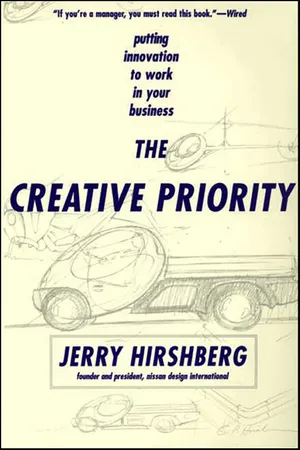
- 288 pages
- English
- ePUB (mobile friendly)
- Available on iOS & Android
The Creative Priority
Jerry Hirshberg
About This Book
How does your company define creativity? Or doescreativity define your company? In this remarkable book, Jerry Hirshberg, founder and president of Nissan Design International (NDI), distills his experience as leader of the world's hotbed of automotive innovation and reveals his strategy for designing an organization around creativity.
In The Creative Priority Hirshberg weaves together enlightening real-world anecdotes with the story of NDI's genesis to illustrate eleven interlocking strategies that came to define NDI's creative priority. Richly illustrated with NDI's elegant designs and sketched, The Creative Priority is at once a compelling narrative, a rich store of hands-on experience, and a grab bag of breakthrough insights that can help your business perform its most vital function.
Frequently asked questions
Information
Table of contents
- Cover
- Title Page
- Dedication
- Contents
- Acknowledgments
- Introduction
- Part I
- Part II
- Part III
- Part IV
- Part V
- Notes
- Selected Bibliography
- Searchable Terms
- About the Author
- Copyright
- About the Publisher